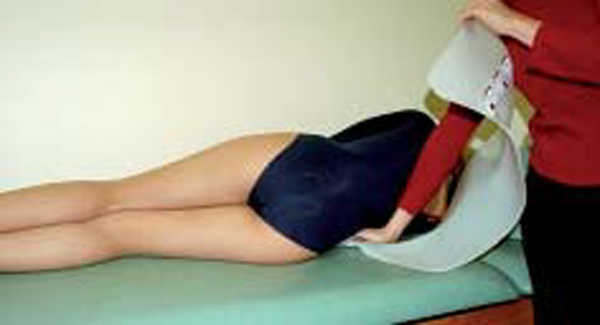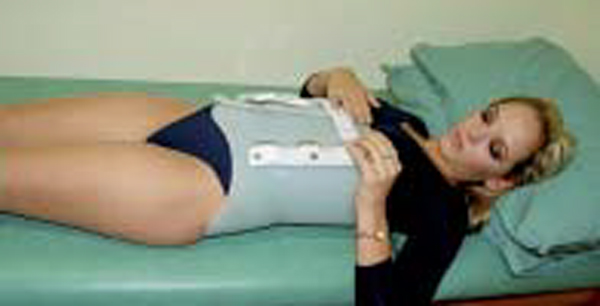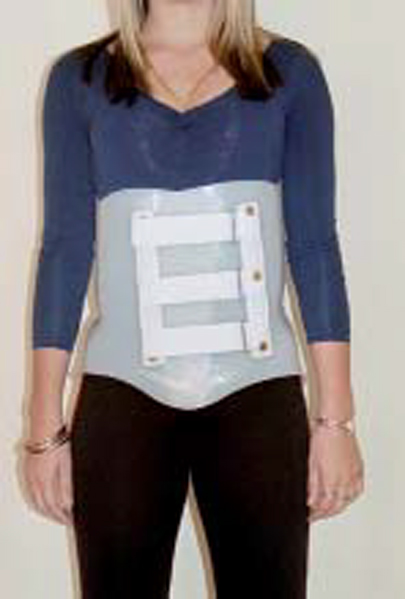Boston Overlap Brace – A Guide for Patients
INTRODUCTION |
|||
|
Your Boston Overlap Brace “BOB”or Anterior Overlap Brace has been fi tted to control the alignment and reduce the movement of your lower thoracic and lumbar spine. Make sure you have discussed the use of your brace with both your orthotist and your doctor prior to discharge. |
|
 |
APPLICATION
Always wear a firm fitting shirt or singlet under the brace. Preferably one made of natural fibres such as cotton.
This brace can be applied either in sitting or lying positions. Speak to your orthotist about which is most suitable.
Lying Position
  |
1. Log roll onto your side and have someone slide the brace under you. | |
| 2. Then roll back into the brace. | ||
| 3. Locate pelvic roll and tighten all straps starting with the top one before sitting up.
|
Sitting Position |
|||
 |
 |
1. Log roll and then sit up on the edge of the bed keeping your back straight and being careful not to twist (use the technique shown to you by your physiotherapist). | |
| 2. Locate the pelvic roll in the middle of the brace on your waist (top of your pelvis) with the opening to the front. | |||
| 3. Ask your orthotist to mark the top and bottom of the brace for you. Fasten the 3 straps firmly beginning with the middle strap. Breathe in and re-tension all straps. |
GENERAL CARE
• The brace is to be worn at all times when you are out of bed.
• You may or may not be able to remove the brace for showering.
• Discuss this with your orthotist and doctor to clarify which you should do.
• Avoid the use of creams and powders under your brace as this may lead to skin irritations. • Your brace may be cleaned with warm soapy water.
• Fluff should be cleaned from the Velcro straps as required to ensure that the grip remains adequate. A toothbrush can be used to do this.
Do Not
1. Heat brace
2. Grind, cut, fi le brace or straps. If it is uncomfortable please contact your orthotist.
3. Do not place anything under your brace as it may create pressure areas.
COMMON PROBLEMS
Heat Retention and Swelling
Unfortunately there is little you can do to combat these symptoms. Ventilation holes make little difference and often lead to pressure problems. Regular changes of the shirt/singlet worn under the brace and periods of lying down out of the brace are the best remedies.
Brace Riding Up When Sitting
Check you are placing the brace low enough when putting it on and tighten the top strap first. If it persists contact your orthotist.
Discomfort from the Pelvic Roll
It is quite common to get some discomfort in this region when first wearing your brace, especially if you have had a bone graft taken from your pelvis. Generally no modifi cations are required and you will become accustomed to the pressure.
Pressure Over the Top of the Thighs When Sitting
Some pressure is required in this area especially if your spinal problem is in the lower regions such as L4 or L5 levels. However, if you feel it is too much, contact your orthotist.
Pressure Under the Breasts
Ladies should always wear a bra with their brace, which should help to prevent any rubbing or pressure. If problems persist contact your orthotist so that the brace may be modified.
Straps Too Long or Short
If you gain or loose weight the straps on your brace may need some adjustment. Contact your orthotist to have this adjusted.
